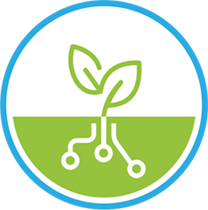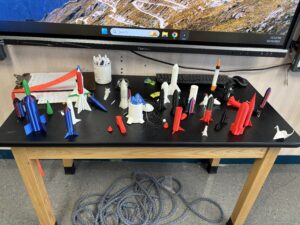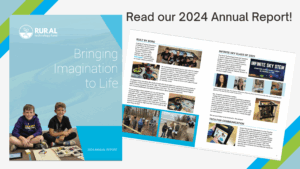Justin Elwonger was ready to bring new technology to his students in Geraldine, MT. Through a STEAM club, LEGO Robotics challenges, and fulfilling various needs around school, Justin has integrated valuable technology skills in his elementary, middle, and high school students.
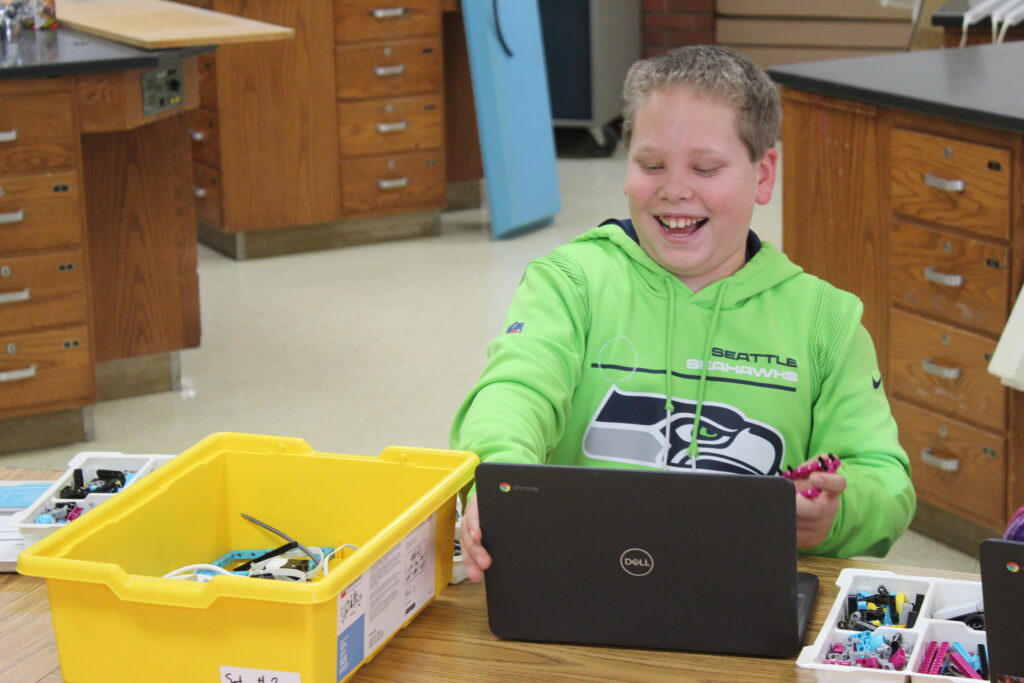
Justin received a grant that funded LittleBits, a 3D printer, and LEGO robotics kits for his science students in a Montana district that serves close to 50 students. Working with elementary, middle, and high school students, Justin determined how to introduce the technology in ways that engaged each age group.
The elementary STEAM Club students have been utilizing the LittleBits for problem-solving and figuring out programming logic. Justin likes using the LittleBits with students to “get their feet wet, learn how circuits work, what different Bits can be used for, and how to get a circuit to do what you want.”
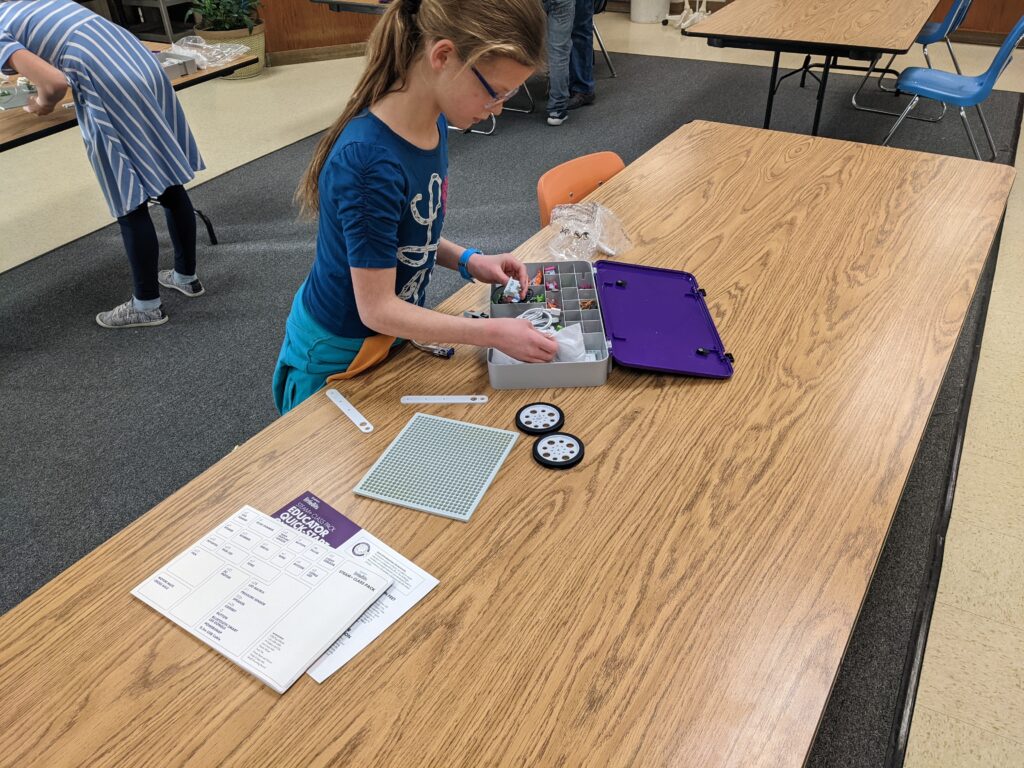
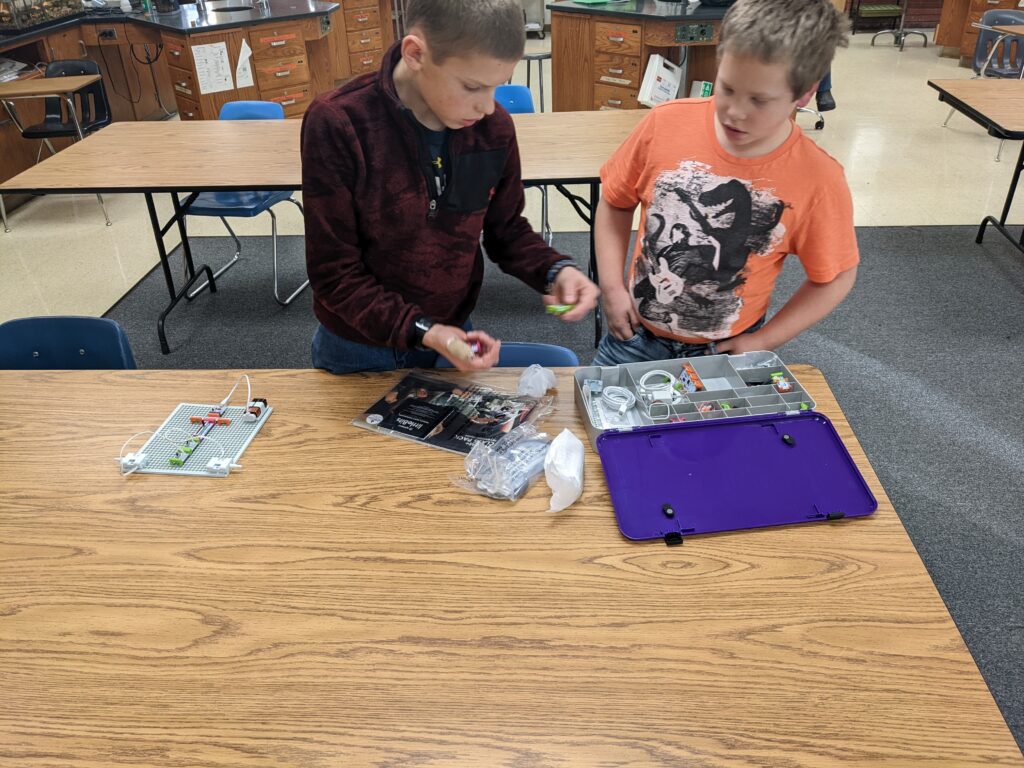
When he first received the Bits, Justin challenged students to move as many crumpled paper balls off the edge of a table as they could within a minute. The students built motorized cars to push things off, which led to discussions and brainstorming of different ways to solve problems. His older elementary students are able to start coding using LittleBits Fuse. The biggest thing he has noticed with the LittleBits is the confidence students gain, learning that “science and engineering isn’t as scary as they might have thought.”
Justin utilizes the LEGO robotics kits with his middle schoolers. His club members were building their own robots and learning how to program when he received an email inviting him to a workshop introducing the Artemis ROADS Challenge, which stands for “Rover Observation and Drone Survey.” The annual challenge provides students exposure to various STEM concepts on a space-related mission, and this year it was focused on the moon. His students are currently competing in this challenge using what they’ve learned in the after-school program! Justin is working on getting his students into FIRST LEGO League in the near future.
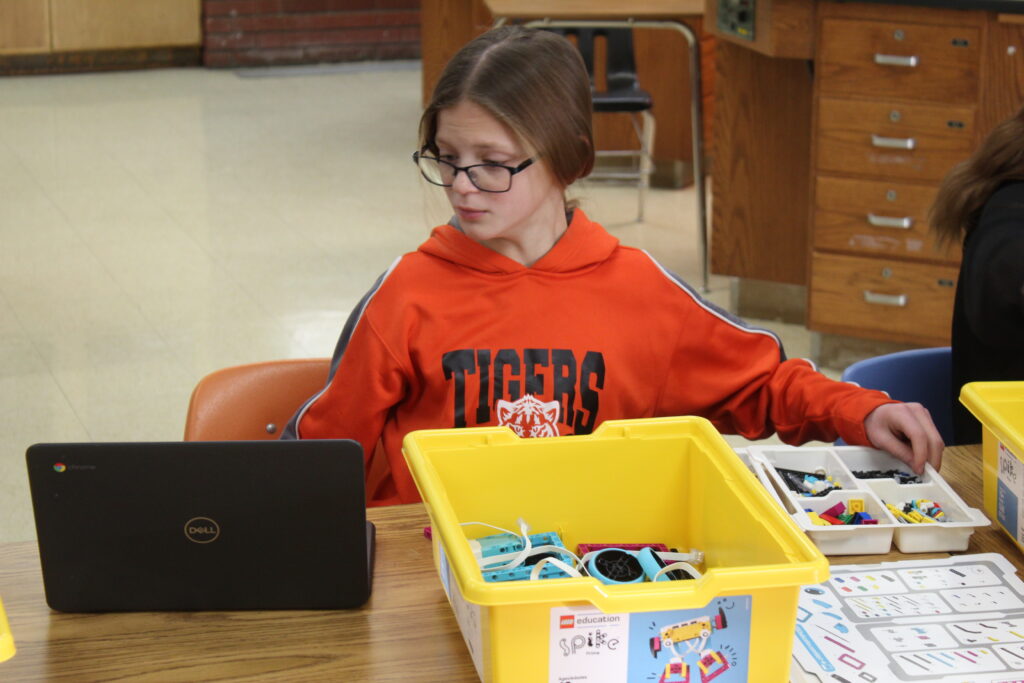
Justin’s older students utilize the 3D Printer for many different purposes. Justin says it is “almost constantly printing out something a student has designed.” Students worked on holders for classroom cards and manipulatives to use for plate tectonics projects. The students also use the printer for robotics purposes, creating parts to build and maintain their LEGO robot.
Justin said it’s “pretty straightforward to design and print our own parts. Kids have designed arms, new wheels, debris catchers, and more for their robots.” He stated that students start with a downloaded STL file (which is a 3D printing file type) for a LEGO Mindstorms piece and then build off of that to create the piece that they need. “They usually go through a few trials before getting something that works the way they want, but they’re quickly getting better!”

Moving forward, Justin hopes to integrate STEAM into the school day rather than just after school. Since many of his students live in faraway rural areas, it can be difficult to get them to an after-school club. He is hoping it would give students more time to dive deeper into 3D printing, build more elaborate robots, and get further into programming languages.
When asked about advice he had for educators interested in integrating technology, Justin stated:
The biggest thing I would say is to not be scared if you aren’t great with technology yourself. The 3D printer I’ve got in my room is the first experience I’ve had with 3D printing. I built my first robot alongside my students. It’s possible to learn alongside your students – you don’t need to be an expert before introducing it to your students.
We cannot wait to see what Justin is able to accomplish with his students next!
Stay up to date with our quarterly newsletter, here!
